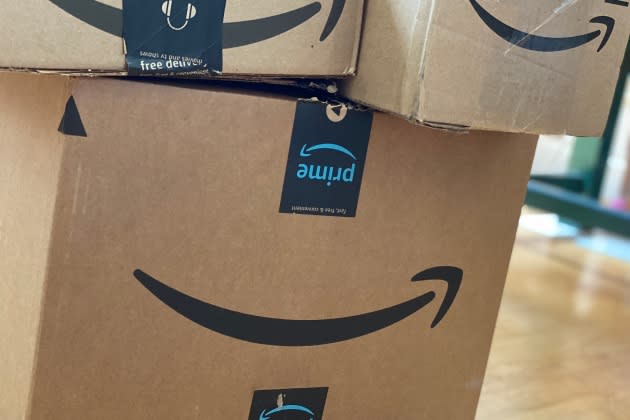FTC Lawsuit Alleges Amazon Traps People Into Prime Memberships

Just weeks after the Federal Trade Commission and Amazon settled a complaint over Alexa and Ring privacy violations, there’s a new battle brewing — this time over alleged tactics that ensnare consumers into Prime memberships.
On Wednesday, the FTC sued the e-commerce giant, alleging that it uses a “dark pattern” of practices that trick consumers into joining Prime, then trapping them by intentionally stymying their efforts to leave.
More from WWD
Red Carpet Looks at 'The Lord of the Rings: The Rings of Power' L.A. Premiere
2020 Holiday Gift Ideas: Google's Top Searched Beauty, Home and Tech Gifts
The complaint follows a leak last year to Business Insider, which obtained internal Amazon documents describing how customers felt tricked and that the company considered changes to its interface design, but ultimately did nothing. Those designs led shoppers to act unintentionally, the report noted, thanks to “misleading imagery or intentionally vague offers.”
A single tap on a “free two-day delivery with Prime” tab on the checkout page, with no additional steps or confirmation, immediately tossed people into a Prime trial that automatically switches to a paid, auto-renewing membership at the end. Customers have 30 days to quit before that — that is, if they have the time and patience to navigate a multipage process created to deter cancellations.
The report quoted a former Amazon employee as saying, “We have been deliberately confusing,” and the tactic appears to have worked. Although Amazon had a rocky 2021, as consumers tightened belts amid economic worries and supply chain chaos, it still managed to top 200 million Prime subscribers.
The FTC was already investigating the company’s Prime practices, but now, after a months-long probe, it’s ready to put the case together: “We charge that these deceptive tactics violate the FTC Act and the Restore Online Shoppers’ Confidence Act,” tweeted FTC chair Lina Khan.
In a multi-tweet thread, Khan noted that Amazon even had an internal name for this process, “Iliad Flow,” likening Prime cancellation to a bloody war.
While it only takes one or two clicks to sign up, the FTC noted that Iliad Flow puts customers through a gauntlet to quit, with as many as four pages, six clicks and 15 options designed to derail cancellation, such as prompts warning about missing out on benefits, promotions and deals.
In the lawsuit documents, the commission called the dark-pattern design “manipulative, coercive or deceptive,” and described the cancellation process as “labyrinthine.”
Dealing with Amazon attorneys seems to have been just as opaque and frustrating. “The complaint also notes that Amazon’s counsel stonewalled the @FTC’s investigation through misdirection and delay,” continued Khan, who believes that the BI story helped lay out the extent of the company’s obstruction. “This lawsuit builds on our ongoing work to protect Americans from firms who trick people into subscriptions and then trap them by making it hard to cancel, including through using ‘dark patterns.’”
Although Amazon previously denied intentionally overcomplicating Prime cancellations, the suit noted that it eventually did take some steps. Under pressure from the FTC, the company took a few actions in April to streamline the process.
The lawsuit is the first major case brought by the FTC under Khan. A Biden pick, Khan has scrutinized Amazon before over antitrust concerns.
She seems eager to clean up e-commerce even beyond Amazon as well. To cap her tweet thread, Khan mentioned the commission’s “click to cancel” proposal, which, if passed, will “require that firms make it as easy to cancel a subscription as it is to sign up for one.”
The lawsuit, filed in the U.S. District Court for the Western District of Washington, arrives a month after the FTC reached a $30 million settlement with Amazon over separate privacy issues tied to its Alexa voice assistant and Ring smart home products.
Amazon has yet to respond to the current lawsuit, but in a May blog post announcing the earlier settlement, the company wrote, “We have a long-standing commitment to preserve the trust of our customers and their families.” It vowed to give customers transparency and control — at least over the Alexa experience. Time will tell if that extends to Prime memberships, too.
Best of WWD
